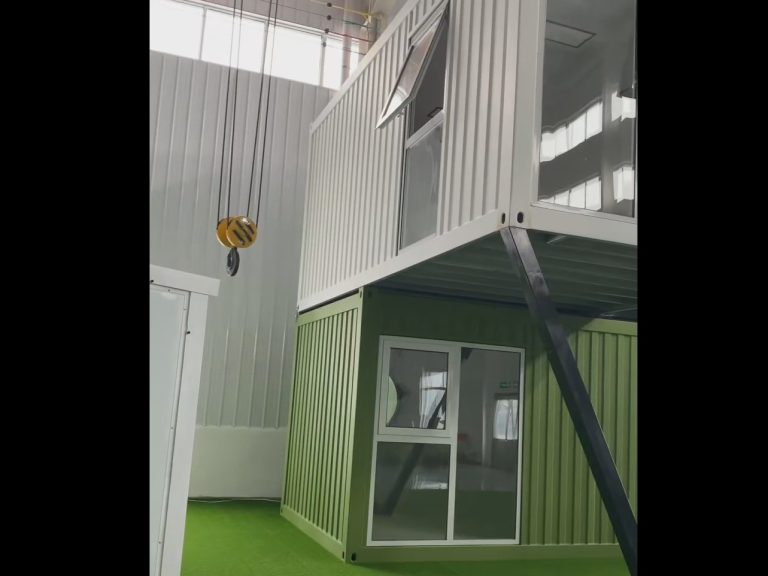Table of Contents
Sustainable Design Features of Box Houses for Environmental Adaptability
Box houses have become increasingly popular in residential construction due to their sustainable design features that promote environmental adaptability and flexibility. These innovative structures are characterized by their simple, box-like shape, which allows for efficient use of space and materials. In this article, we will explore the key features of box houses that make them ideal for sustainable living and environmentally friendly construction.
One of the main advantages of box houses is their modular design, which allows for easy customization and expansion. This flexibility makes it possible to adapt the structure to different environmental conditions and changing needs over time. For example, box houses can be easily modified to incorporate passive solar design principles, such as large windows on the south side to maximize natural light and heat gain in the winter months. This not only reduces the need for artificial lighting and heating but also helps to lower energy consumption and utility costs.
In addition to their modular design, box houses are also highly adaptable to different climates and landscapes. Their compact footprint and efficient layout make them well-suited for urban infill projects and small lots, where space is limited. Box houses can be built on a variety of foundations, including concrete slabs, crawl spaces, or even stilts, depending on the site conditions and local building codes. This versatility allows for greater flexibility in choosing a location for the home and reduces the environmental impact of construction.
Another key feature of box houses is their use of sustainable materials and construction techniques. Many box houses are built using prefabricated components, which are manufactured off-site and assembled on-site, reducing construction waste and minimizing disruption to the surrounding environment. Additionally, box houses can be constructed using recycled or reclaimed materials, such as reclaimed wood, metal, or glass, further reducing their environmental footprint.
Furthermore, box houses are designed to be energy-efficient and environmentally friendly. They are often equipped with high-performance insulation, energy-efficient windows, and passive ventilation systems to reduce heating and cooling loads. Some box houses also incorporate renewable energy technologies, such as solar panels or wind turbines, to generate electricity on-site and reduce reliance on the grid. These features not only help to lower energy bills but also reduce greenhouse gas emissions and promote a more sustainable way of living.
In conclusion, box houses are an excellent choice for those looking to build a sustainable and environmentally friendly home. Their modular design, adaptability to different climates and landscapes, use of sustainable materials, and energy-efficient features make them ideal for promoting environmental adaptability and flexibility in residential construction. By choosing a box house, homeowners can reduce their carbon footprint, lower their utility costs, and enjoy a more comfortable and sustainable living environment for years to come.
Benefits of Modular Construction for Flexibility in Residential Box Houses
Modular construction has gained popularity in recent years due to its numerous benefits, including environmental adaptability and flexibility. One of the key advantages of modular construction is the ability to create box houses that can easily adapt to different environmental conditions. These box houses are designed to be flexible and can be easily modified to suit the needs of the occupants.
One of the main benefits of box houses is their ability to be easily transported and assembled in different locations. This makes them ideal for areas that are prone to natural disasters or other environmental challenges. In the event of a disaster, box houses can be quickly assembled to provide temporary shelter for those in need. This flexibility allows for quick response and recovery efforts in times of crisis.
Additionally, box houses are designed to be energy-efficient and environmentally friendly. The modular construction process allows for greater control over the materials used, resulting in less waste and a smaller carbon footprint. Box houses can also be equipped with energy-efficient features such as solar panels, rainwater harvesting systems, and green roofs. These features help to reduce energy consumption and minimize the impact on the environment.

Another benefit of box houses is their adaptability to changing needs and lifestyles. The modular design allows for easy expansion or modification of the living space as the needs of the occupants evolve. This flexibility is especially beneficial for growing families or individuals who may need to accommodate changing circumstances. Box houses can be easily customized to suit the preferences of the occupants, making them a versatile and practical housing solution.
Furthermore, box houses are designed to be durable and long-lasting. The use of high-quality materials and construction techniques ensures that these homes can withstand the test of time and remain in good condition for years to come. This durability is essential for areas that experience extreme weather conditions or other environmental challenges. Box houses provide a safe and secure living environment for the occupants, giving them peace of mind knowing that their home is built to last.
In conclusion, the environmental adaptability and flexibility of box houses make them an attractive option for residential construction. The modular design allows for quick assembly and customization, making them ideal for areas that require quick response and recovery efforts. Box houses are energy-efficient, environmentally friendly, and durable, making them a sustainable housing solution for the future. With their ability to adapt to changing needs and lifestyles, box houses offer a practical and versatile housing option for individuals and families alike.





